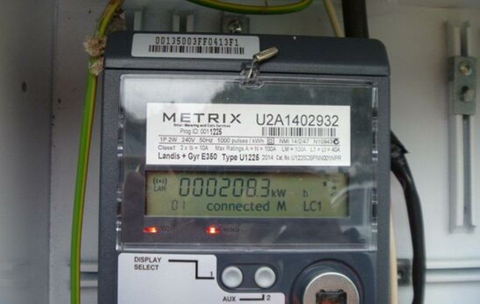Your electricity meter
Here’s how electricity is measured in your home and how to read your electricity meter
Electricity is used by the kilowatt hour (kWh), more commonly known as a unit. One unit is equivalent to 1,000 Watts (kW) switched on for one hour.
A unit is a definite quantity, it does not vary and cannot be diluted or changed.
The wattage of an electrical appliance is the “loading” and is usually found marked on the small metal nameplate of the appliance. This shows how many watts the appliance uses when it is on.
Your electricity meter
Electricity meters are precision instruments, and extremely accurate.
As the meter records watts and hours, it has a technical name of “watt-hour meter”, and this indicates units of electricity.
There are several types of meter dials. Some older types of electricity meters have indicating dials, while others use a cyclometer register. The latest meters have liquid crystal displays like a calculator. Occasionally, meters have two separate displays for special tariff options.
Frequently asked questions about smart meters
Advanced meters can be read remotely so there is no need for a meter reader to come onto your property. They also enable remote disconnection and connection.
The final reading (which is required when leaving a property or changing retailers) can occur almost immediately.
Every electricity bill is based on ‘actual’ readings – no more estimates!
Smart meters allow electricity retailers to offer ‘time-of-use’ pricing options, meaning the cost per kWh will vary at different times of the day (often called peak, shoulder, or off-peak rates). Most retailers also have technology so you can analyse your electricity usage per hour, day or month.
They can measure electricity both ways, so can record electricity being generated by a solar panel or wind turbine that’s being exported back to the grid.
Information is only transmitted from smart meters once a day, for less than a minute.
Radio transmissions from smart meters are regulated and must comply with legal requirements.
If you have concerns, general information about exposure standards and health effects is available from National Radiation Laboratory of Environmental Science and Research Ltd, or contact your energy retailer.
Generally yes, but your retailer will have a note of your opening reading if it wasn’t zero.
Yes you can. Your new retailer will take ownership of the meter when you switch.
Northpower do not own the meters, so you will need to discuss this with your electricity retailer.
How to read your advanced meter
The meter continuously scrolls through several screens.
The screens available will depend on how many phases your home has and whether you have separately metered hot water.
Read all the numbers including zeros and note the register name . For example 01-00208.3 kWh (as seen below.) One of the readings is a total of the separately displayed meter registers.


How to read your older style electricity meter
If you’d like to keep a daily or weekly record of your electricity use, here’s how to read your meter:

Ignore the small dials marked 1/10 or 1/100 (yellow) and read the other dials from left to right. The dial hand should always be read as indicating the figure it has just passed, and not the one to which it may be nearest.
When the hand is between two figures, write down the lowest figure.
When the hand is between zero and nine, write down nine. When the hand is on a figure (for example seven), write down six rather than seven, unless the hand on the nearest dial to the right is between figure zero and figure one.
Go through the same process with the other dials, writing down the figures in the order left to right.
In figure 2, the reading of the meter is 9,469 units.
Subtract your earlier reading from the present reading and the difference will be the number of units used in the time between those readings.
Why has my power bill increased?
Increases or decreases in your power bill are rarely due to inaccurate or faulty meters, but may be due to an actual read after some estimated reads.
Visit our high power usage checklist to help work out why your power usage has changed.
Common household appliances and their use per one unit of electricity
Learn more about common household appliances and their electricity usage.
